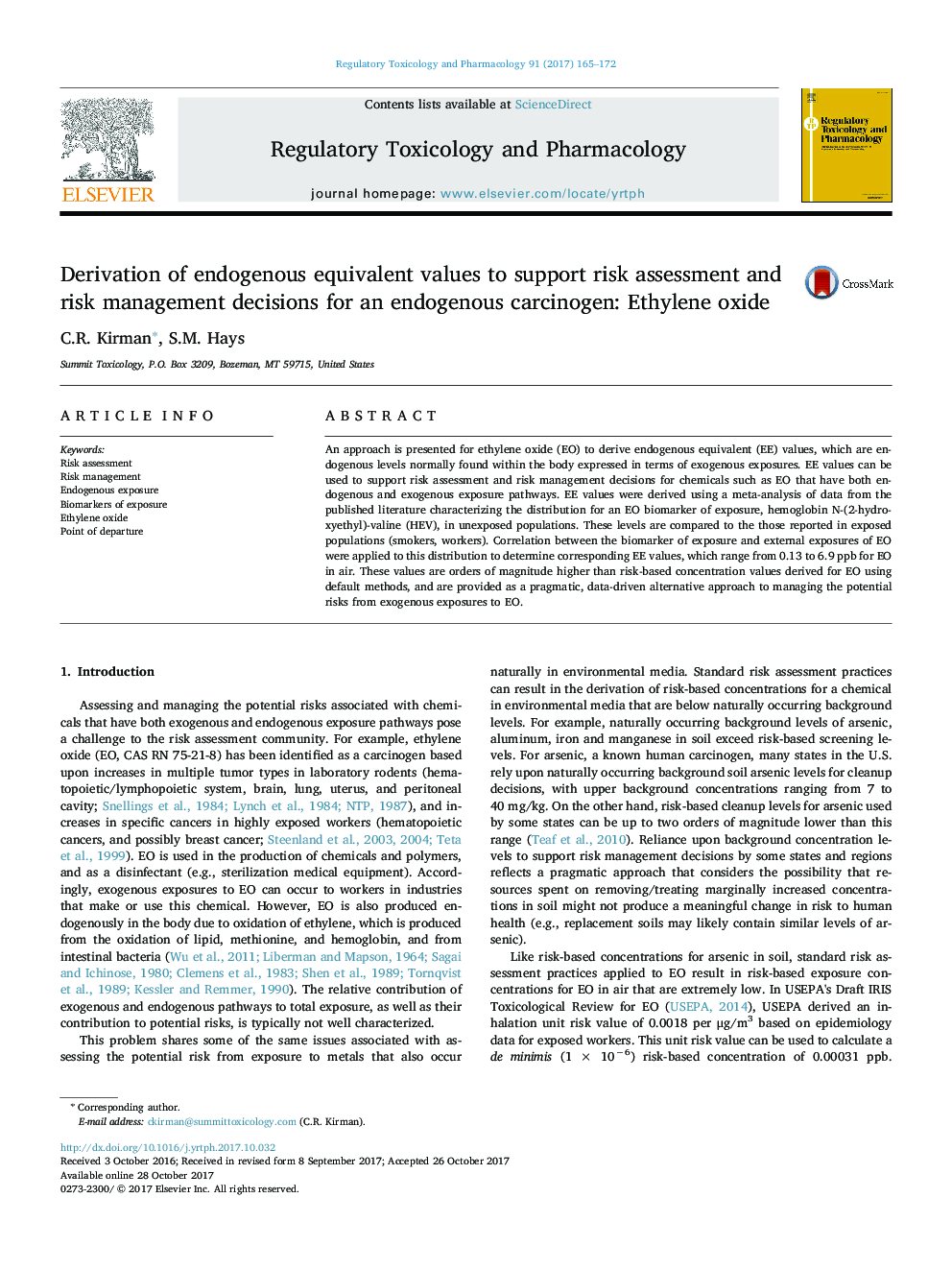| Article ID | Journal | Published Year | Pages | File Type |
|---|---|---|---|---|
| 8551974 | Regulatory Toxicology and Pharmacology | 2017 | 8 Pages |
Abstract
An approach is presented for ethylene oxide (EO) to derive endogenous equivalent (EE) values, which are endogenous levels normally found within the body expressed in terms of exogenous exposures. EE values can be used to support risk assessment and risk management decisions for chemicals such as EO that have both endogenous and exogenous exposure pathways. EE values were derived using a meta-analysis of data from the published literature characterizing the distribution for an EO biomarker of exposure, hemoglobin N-(2-hydroxyethyl)-valine (HEV), in unexposed populations. These levels are compared to the those reported in exposed populations (smokers, workers). Correlation between the biomarker of exposure and external exposures of EO were applied to this distribution to determine corresponding EE values, which range from 0.13 to 6.9Â ppb for EO in air. These values are orders of magnitude higher than risk-based concentration values derived for EO using default methods, and are provided as a pragmatic, data-driven alternative approach to managing the potential risks from exogenous exposures to EO.
Related Topics
Life Sciences
Environmental Science
Health, Toxicology and Mutagenesis
Authors
C.R. Kirman, S.M. Hays,
